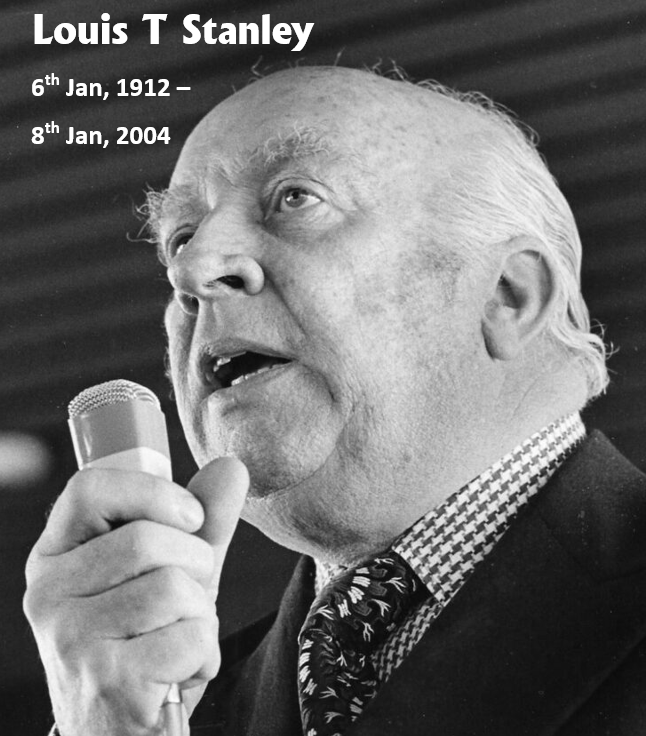
Louis T Stanley, who became a member in 1948 but subsequently left the Association, died in January, 2004 at the age of 92. As well as a career in motor racing administration, Louis wrote many books, around 20 of them on golf.
The 1991 edition of his “History of Golf” includes this tribute from Gary Player: “Louis Stanley, a scratch golfer, has given considerable thought to the techniques of the game. Over the years he has studied, analysed and played with many of the greatest players, in fact, no player of international repute has escaped the lens of his camera.”
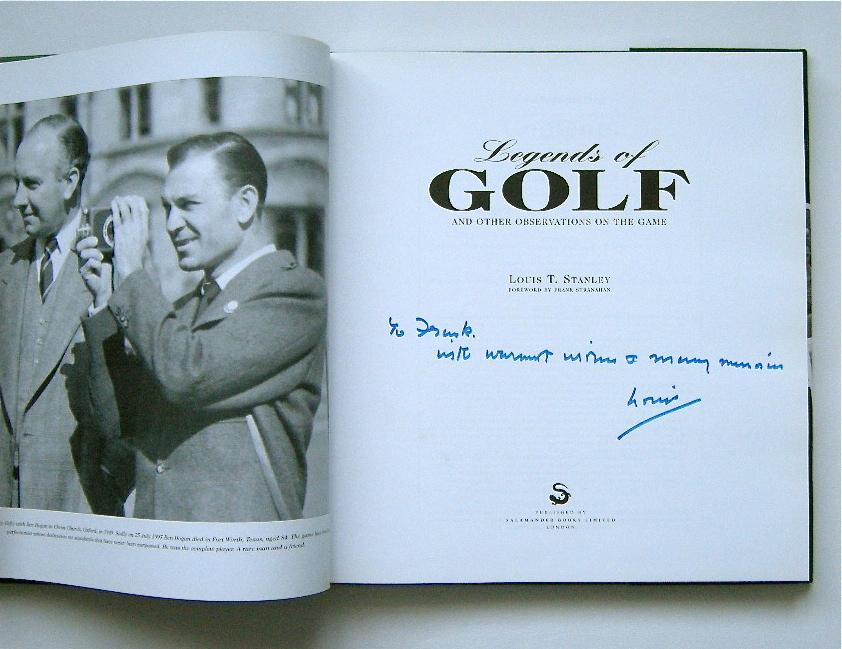
The following obituary is provided courtesy of The Times:
“Beginning a journalistic career writing on sporting affairs for such magazines as The Field, Louis Stanley found himself in the 1950s and 1960s involved in motor racing administration as chairman of British Racing Motors (BRM) in the period after the team was taken over by the industrialist Sir Alfred Owen. Stanley’s second wife, Jean Baber, was Owen’s sister, and for the next ten years Stanley was involved with the fortunes of the company, of which he and his wife were appointed joint managing directors.
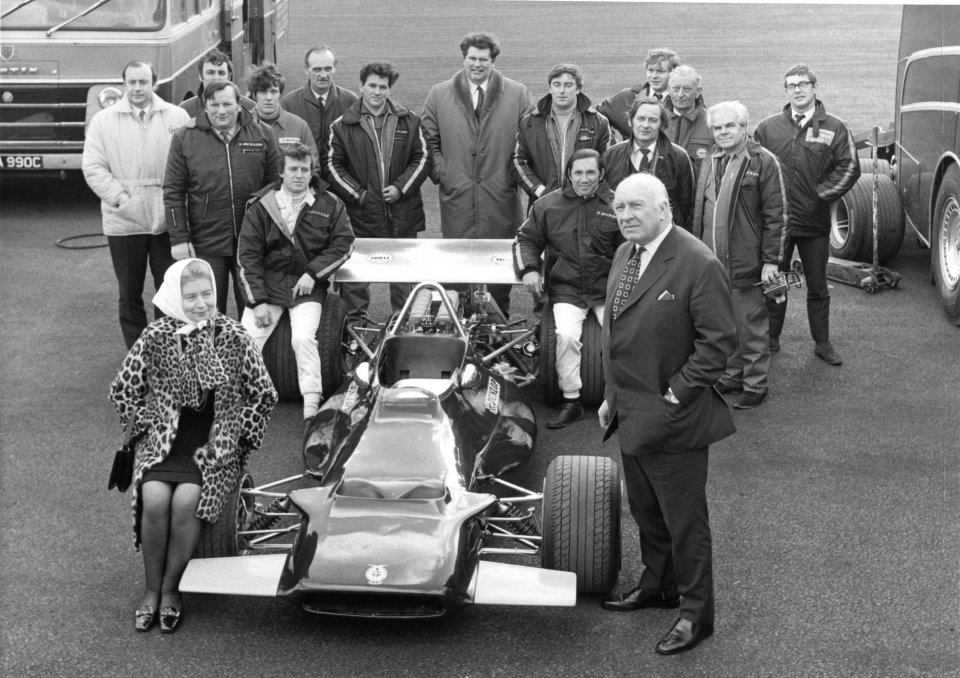
“Stanley was involved in all aspects of racing, notably driver safety, for which he fought a personal crusade. His creation of the International Grand Prix Medical Service is his permanent achievement. The Formula One experience provided him with the material for a number of books about the sport. After the demise of BRM in the 1970s he continued his writing career, producing a steady flow of books.
“Louis Thomas Stanley was born in New Brighton, the son of a cotton broker, and educated at Birkenhead College; Coats Hall, Edinburgh; and Emmanuel College, Cambridge, where he read economics and theology. His journalism, which began with his writing golfing articles for The Field, was to spread into many sporting, travel and cognate spheres in the years that followed, and it spawned a host of books. Green Fairways (1947) was a compilation of his Field golf articles to that date.
“BRM had been founded in 1947 by Raymond Mays to carry the standard for British motor racing. But ‘the nation’s team’ always struggled until it was taken over in 1952 by Sir Alfred Owen, and was able to benefit from the financial backing of his Rubery Owen industrial empire. Thereafter it became the Owen Racing Organisation, though its cars were still known as BRMs After marrying Owen’s sister in 1955, Stanley found himself not only at the heart of BRM, but an important figure in the Formula One business in general. Not everyone appreciated his high-handed manner and forthright opinions, but drivers realised that his heart was in the right place, when it came to their safety.
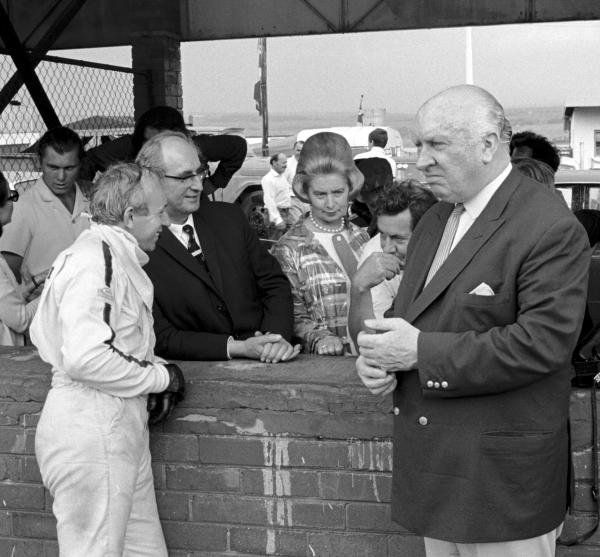
“In 1967 he established the International Grand Prix Medical Service, which brought a state-of-the-art mobile hospital to grand prix circuits with a databank containing medical particulars of every driver. His personal crusade, backed by Jackie Stewart, then a BRM driver, became the blueprint for the mandatory safety rules that today govern Formula 1 racing and have made deaths so rare.
“After the death in 1971 of Jo Sieffert, when his car exploded into flames after hitting a bank at Brands Hatch while he was driving for BRM, Stanley redoubled his efforts to find ways to protect drivers from fire. He was honorary secretary of the original Grand Prix Drivers’ Association, a trustee of the Jim Clark Foundation (Clark was killed during a Formula Two race at Hockenheim in 1968), and the founder of the Jo Sieffert Advisory Council. Even after BRM ceased to compete in Formula One from the mid-1970s onwards, after Owen put the company into liquidation, Stanley remained an elder statesman on the grand prix circuit. At the same time he continued writing prolifically on a range of subjects. Throughout his long life he had published books on topics including motor racing, golf, Cambridge, Cornwall and London inns.
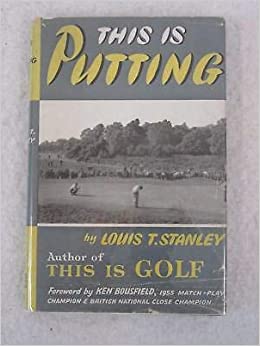
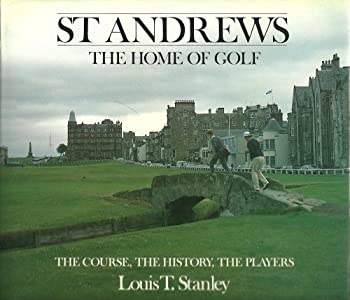
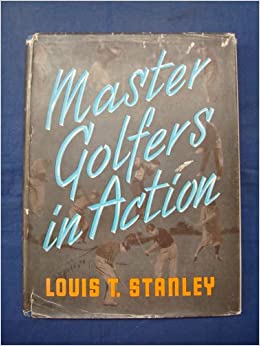
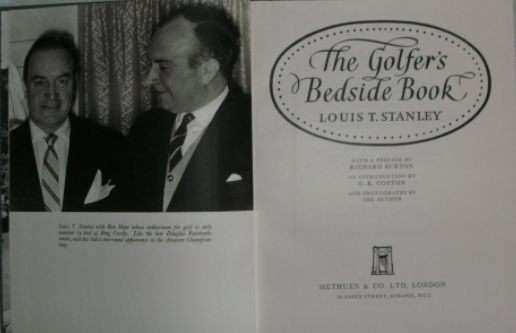
The preface was written by Richard Burton.
“Stanley married in 1942 Kate Furness. There were two sons of the marriage, which was dissolved in 1950. His second wife, Jean, died in 2002. He is survived by the two sons of his first marriage and by the two stepsons and two stepdaughters of his second.
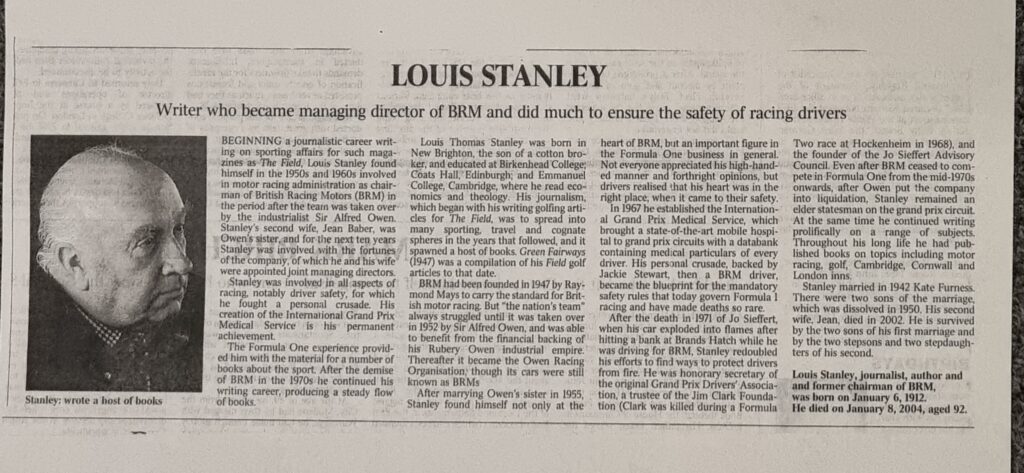
List of books by Louis T Stanley – https://www.thriftbooks.com/a/louis-t-stanley/507475/
WIKIPEDIA
Louis Thomas Stanley (6 January 1912 – 8 January 2004) was the chairman of the Formula One team BRM. He was married to Jean, the sister of Sir Alfred Owen. Owen was proprietor of the BRM team from the early 1950s to 1974.
Biography
Stanley studied theology at Emmanuel College, Cambridge. He worked as a journalist for Queen magazine and was a manager at The Dorchester Hotel in London. He attended the 1959 Monaco Grand Prix with his wife, and as a result became interested in motor racing. Alfred Owen did not attend Sunday races for religious reasons and Stanley and his wife became his representatives at meetings. After the 1960 Dutch Grand Prix, in which a spectator, in a prohibited area, died after Dan Gurney crashed his BRM, Stanley re-organised the team, easing disquiet felt by the drivers. His subsequent promotion of Tony Rudd proved a positive move as BRM secured the Constructors’ Championship in 1962, together with the World Drivers’ Championship for Graham Hill. This however, proved a high point in the team’s existence and it could not compete with the Cosworth-powered cars of the later 1960s and 1970s. In the 1970s, the team competed as Stanley-BRM, after the Owen Organisation withdrew its support, but despite arranging innovative sponsorship deals with Marlboro and Yardley, Stanley could not arrest the team’s decline.
Stanley was instrumental in establishing the Formula One mobile medical unit which for the first time provided good standard medical facilities at circuits. When Jackie Stewart was injured, driving for BRM, in 1966, both he and Stanley were unimpressed with the medical help available at the circuit. Stanley became a strong ally of Stewart in his campaign to improve safety and created the International Grand Prix Medical Service in 1967. Stanley himself funded the mobile medical unit, which was made available to GP circuits in Europe. After Jo Siffert was killed whilst driving for BRM at Brands Hatch in 1971, Stanley personally tested fireproof suits and oversaw the training of fire marshalls.
Stanley was honorary secretary and treasurer of the Grand Prix Drivers’ Association in its original form and was also a prolific author.
Personal life
Stanley was married twice; firstly, to Kate Furness (two sons) from whom he was divorced in 1949. In 1955 he married Jean Baber (née Owen) who had four children from her previous marriage. Jean Stanley died in June 2002.
Stanley died on 8 January 2004, aged 92, at Trumpington, Cambridgeshire following a stroke.
References
- ^ Brown, Allen. “Louis Stanley”. oldracingcars.com. Retrieved 27 August 2018.
- ^Tremayne, David. “Obituary”. independent.co.uk. Retrieved 27 August 2014.
- ^ Fearnley, Paul (March 2004). “Louis Stanley”. Motor Sport magazine archive. p. 18. Retrieved 17 December 2015.
- ^ Nye, Doug (May 2012). “Louis Stanley: Another Fine Mess?”. Motor Sport magazine archive. p. 140. Retrieved 17 December 2015.
- Tremayne, David (September 1994). “The man who played with fire”. Motor Sport magazine archive. p. 40. Retrieved 18 December 2015.
- ^ “Jean Stanley”. Motor Sport magazine archive. September 2002. p. 7. Retrieved 17 December 2015

Recent Comments